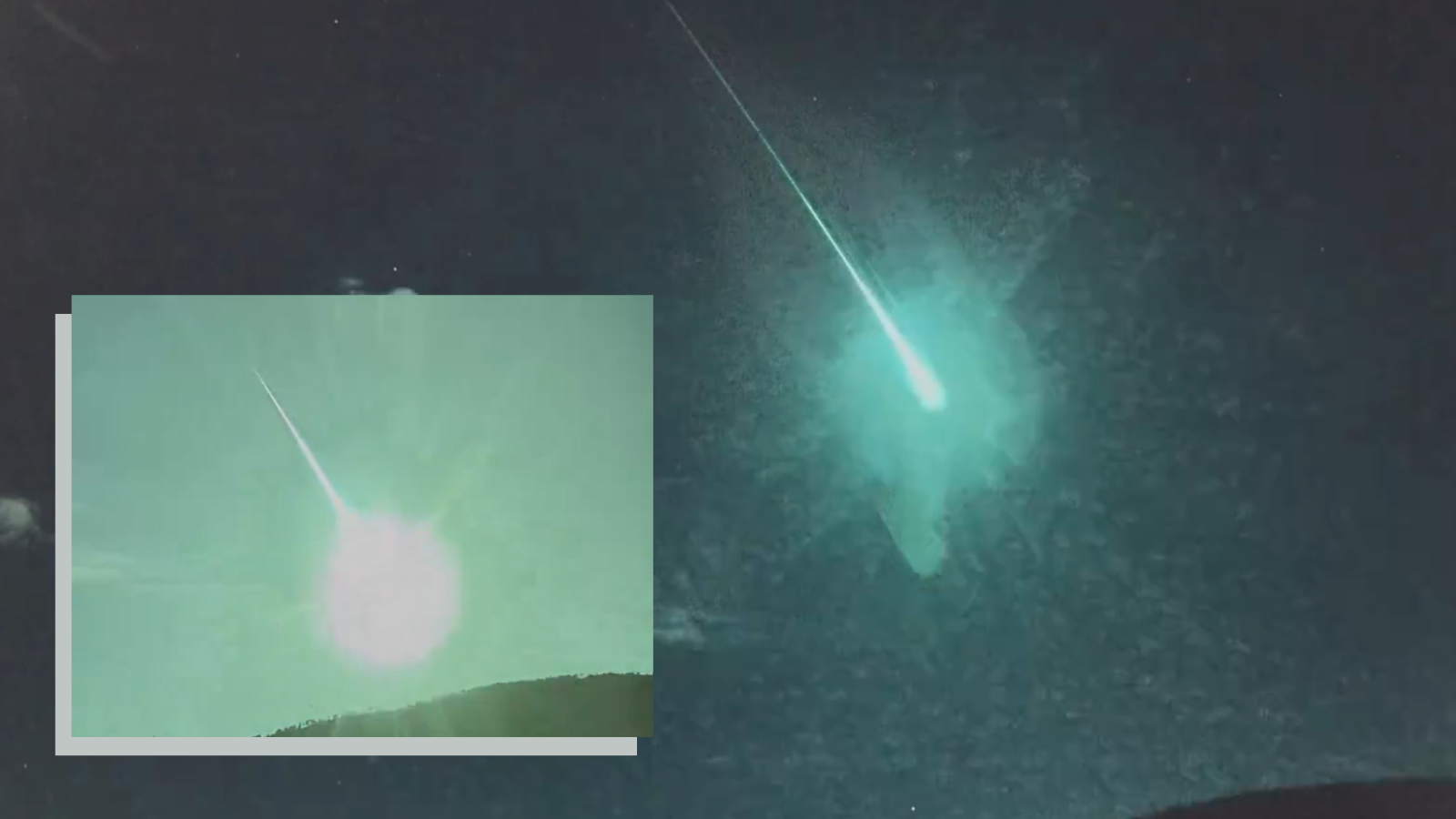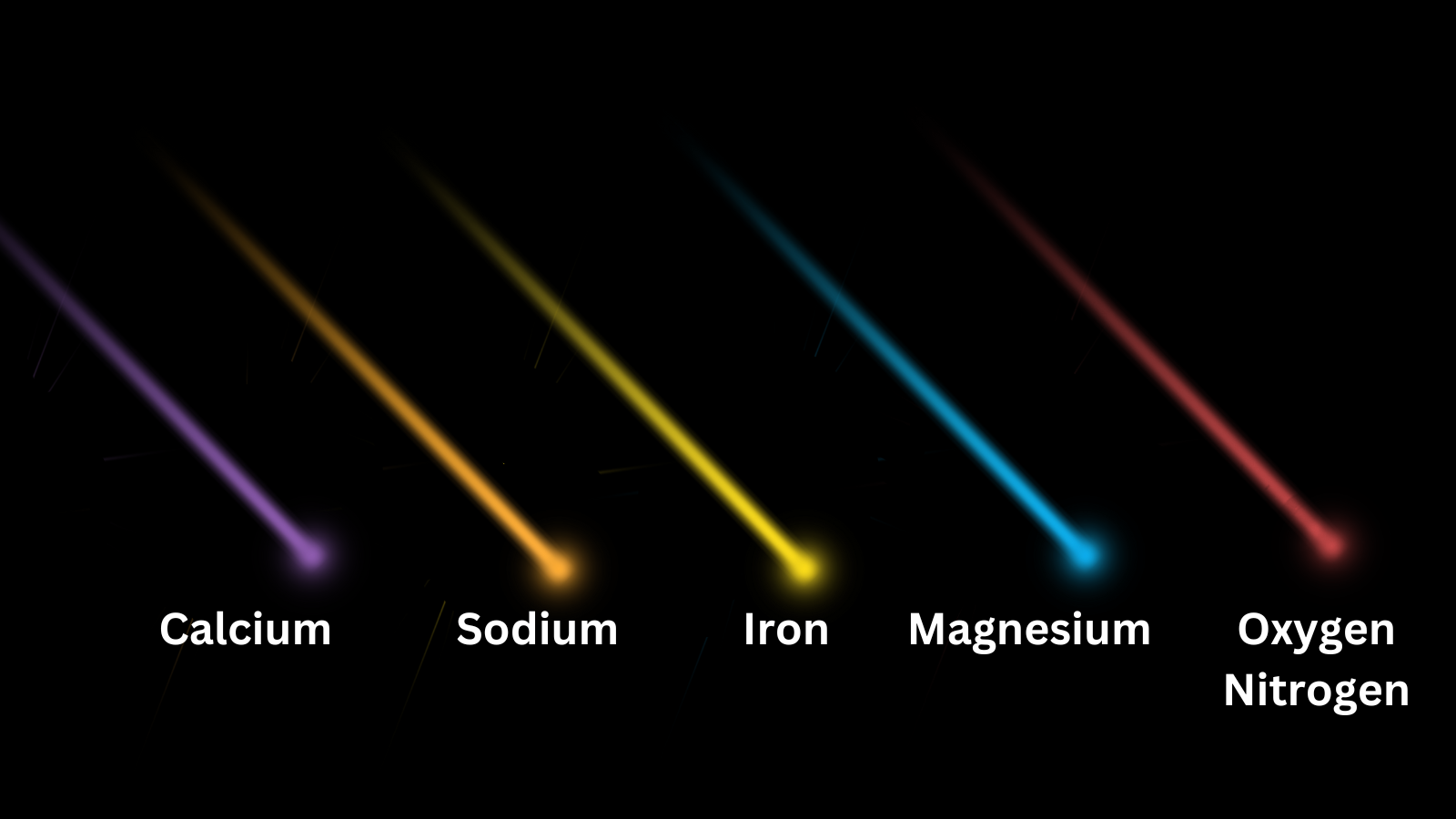
The internet is alight with footage of a meteor that sped through the night skies over Portugal and Spain, lighting up the skies as a blue-green fireball.
The meteor was confirmed by European Space Agency (ESA), who caught the fireball with its cameras in Cáceres, Spain, at 6:46 p.m. EDT (22:46 UTC) on Saturday (May 18). The ESA confirmed that the fireball was a piece of a comet that rocketed over Spain and Portugal, traveling at around 100,000 miles per hour, or about 65 times as fast as the top speed of a Lockheed Martin F-16 jet fighter. The ESA added that the meteor likely burned up over the Atlantic Ocean at an altitude of around 38 miles (60 kilometers) over Earth.
Social media users took to X, Facebook, and Reddit by the thousands to discuss the bright fireball and share stunning images and videos.
Related: Meteorites from Asteroid 2024 Bx1, which just hit Earth, may be super-rare space rocks
The ESA wrote on its X feed that "ESA's fireball camera in Cáceres, Spain, spotted this stunning meteor last night! Our Planetary Defence Office is currently analyzing the size and trajectory of the object to assess the chance that any material made it to the surface."
☄️😍 ESA’s fireball camera in Cáceres, Spain, spotted this stunning meteor last night!Our Planetary Defence Office are currently analysing the size and trajectory of the object to assess the chance that any material made it to the surface.Credit: ESA/PDO/AMS82 - AllSky7 pic.twitter.com/gSU4unncQWMay 19, 2024
X user Colin Rugg shared stunning footage of the meteor on his feed, writing: "This is insane. Early reports claim that the blue flash could be seen darting through the night sky for hundreds of kilometers. At the moment, it has not been confirmed if it hit the Earth’s surface however some reports say it may have fallen near the town of Castro Daire. Other reports say it was closer to Pinheiro."
JUST IN: Meteor spotted in the skies over Spain and Portugal.This is insane.Early reports claim that the blue flash could be seen darting through the night sky for hundreds of kilometers.At the moment, it has not been confirmed if it hit the Earth’s surface however some… pic.twitter.com/PNMs2CDkW9May 19, 2024
News and media organization Nova Portugal also shared footage of the fireball taken from various locations.
"A meteorite lit up the sky of Portugal with a sparkling blue last evening to the surprise of the inhabitants who were outside at the time of its passage. Thousands of Portuguese people shared their reactions to the event on social networks."
#Événement : Une météorite à illuminé le ciel du Portugal 🇵🇹 d'un bleu étincelant hier soir à la surprise des habitants qui se trouvaient à l'extérieur au moment de son passage.Des milliers de portugais ont partagés leurs réactions à l'événement sur les réseaux sociaux. pic.twitter.com/OE4HUCUr3FMay 19, 2024
"Shooting stars" like this are pieces of material that break away from larger bodies like asteroids, comets, the moon, or even other planets and enter Earth's atmosphere at high speeds. The friction these fragments called meteoroids (the name given to them when they are in space) encounter causes them to glow brightly, becoming meteors for a few brief seconds as they streak through the atmosphere, creating a glowing trail.
Around 90% to 95% of interstellar matter that makes its way to Earth this way doesn't last long enough to make it to the ground. If a meteoroid does make it to the ground, it is usually in the form of dust or very small particles and it is called a meteorite.

Just as different chemical elements are used to generate fireworks of different colors, the color of this fireball indicates its chemical composition.
The bright blue/green flash of the fireball indicates the burning of magnesium. One type of meteorite known to bear magnesium are the "pallasites," which contain large olive-green crystals that are a form of magnesium-iron silicate called olivine.
Though the origins of pallasites are somewhat mysterious, scientists think they could form when asteroids melt, with denser material sinking to their cores. Pallasites could come from the boundaries between an asteroid's metallic core and its silicate, olivine-rich mantle.
If this is the case, then pallasites could teach scientists a great deal about how rocky planets like Earth formed in the solar system about 4.5 billion years ago.
Of course, this meteorite hasn't yet been confirmed as pallasite, and scientists don't know if any of it actually reached the ground, though the ESA says that the possibility of this is slim at best.
There's little doubt that the eruption of this fireball over Portugal and Spain is going to keep meteorite hunters busy for at least the coming days as they search for fragments that could have reached terra firma.







